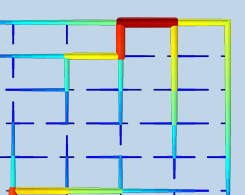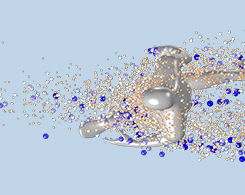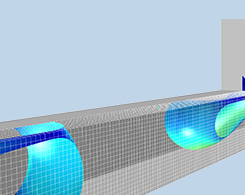Computational Fluid Dynamics (CFD) Blog Posts

Analyzing Tsunami Waves with an Established Benchmark Model
The 1993 Hokkaidō earthquake in Japan caused tsunami waves that reached massive runup heights — one recorded wave in Monai Valley even reached as high as 32 m (~104 ft)!

Modeling the Behavior of an Oldroyd-B Polymer
Have you ever noticed that when a certain force is applied to a viscoelastic fluid, the fluid starts to look like beads on a string? Here, we showcase an example that uses an Oldroyd-B polymer.

Designing District Heating Networks Using Topology Optimization
District heating networks help power plants reach high efficiencies by utilizing cogeneration, which is especially helpful in the winter. How does topology optimization fit in? Keep reading…

Modeling Droplet Flow in an Open Space with COMSOL Multiphysics®
If you are jogging six feet apart from someone else, should you both be wearing masks? Simulation was used to analyze the motion of particles between two runners in an open space to find answers.

How Does This Lip Gloss Appear to Defy Gravity?
We attempt to explain a mysterious, gravity-defying phenomenon involving a viral video, dielectric materials, electrostatics, and lip gloss.

Optimizing an NIV Mask Design with Multiphysics Simulation
NIV masks offer a form of noninvasive monitoring and ventilation for COVID-19 patients, which lessens the need for ventilators and other mechanical respirators.

6 Ways Engineers Are Using Simulation to Help the Environment
Energy-efficient buildings and appliances. Safe nuclear waste storage. Well-preserved freshwater lakes. These are just a few examples of how simulation is being used to help the environment.

Modeling and Simulation of Multiphase Flow in COMSOL®: Part 1
Multiphase flow can be modeled on scales ranging from fractions of microns to tens of meters. Get an overview of the dispersed and separated multiphase flow models for different types of flow.
